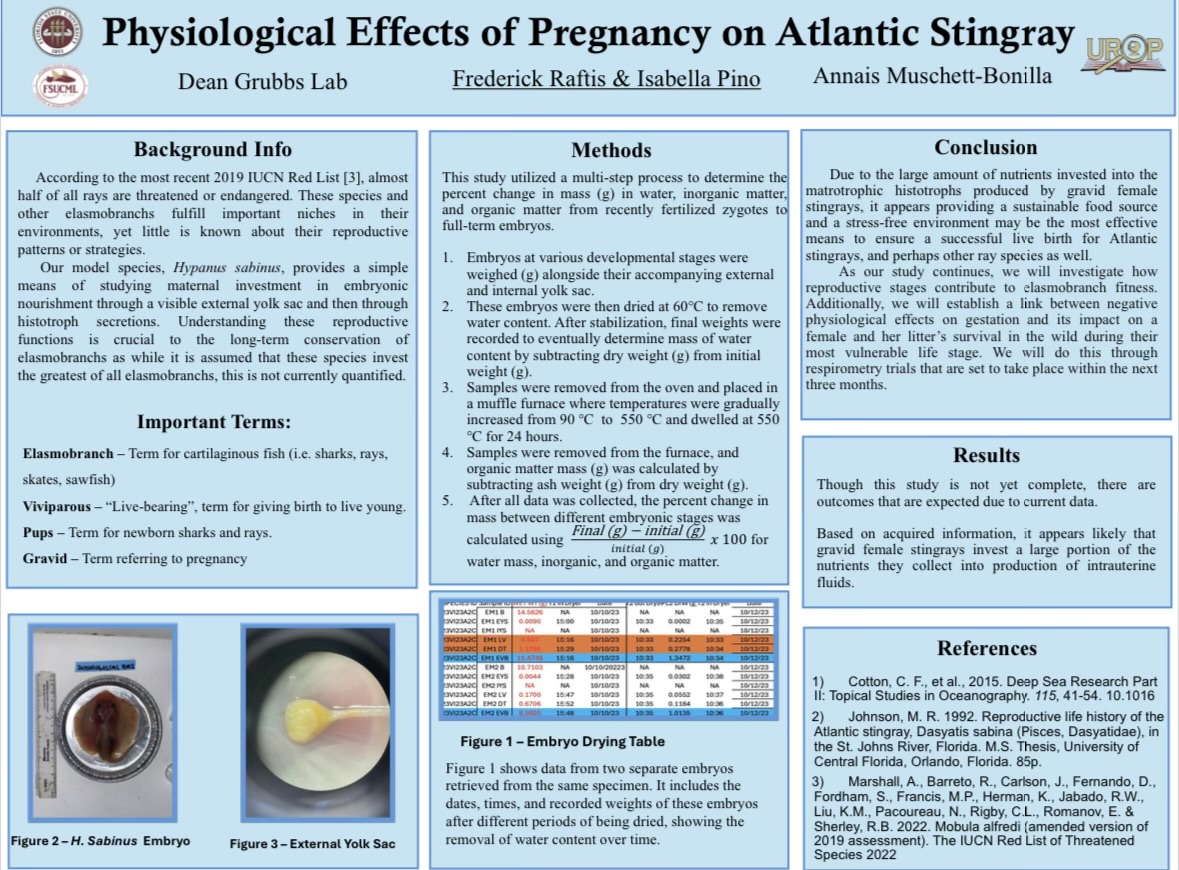Research Symposium
24th annual Undergraduate Research Symposium, April 3, 2024
Isabella Pino Poster Session 3: 1:30 pm - 2:30 pm/42

BIO
My name is Isabella Pino and I am from Miami, Florida. I am a dedicated advocate for animal welfare and environmental conservation, with a fervent passion for veterinary medicine, particularly regarding marine wildlife. From mentoring at Miami's local zoo to volunteering at veterinary clinics, I have immersed myself in various facets of animal care. My journey has taken me to research projects focusing on elasmobranch fish and bull shark populations, demonstrating a commitment to advancing scientific knowledge and conservation efforts. Eager to contribute to marine animal behavioral research, I aim to attend veterinary school and specialize in marine wildlife health and conservation, driven by a desire to make meaningful contributions to the field.
Physiological Effects of Pregnancy on Atlantic Stingray
Authors: Isabella Pino, Annais Muschett-BonillaStudent Major: Biological Sciences
Mentor: Annais Muschett-Bonilla
Mentor's Department: Arts and Sciences Mentor's College: Arts and Sciences Co-Presenters: Frederick Raftis
Abstract
Elasmobranch reproductive strategies have largely been underrepresented in marine research over the last 50 years. A large proportion of ray species are viviparous and females nourish their offspring through lipid-rich fluids called histotroph. The nutritional costs of creating these fluids are unknown but thought to be the greatest form of maternal investment of all sharks and rays. This study quantifies the total maternal investment from mother to embryo in Hypanus sabinus, the Atlantic stingray, throughout their 4 to 4.5 month gestation. Embryos at various developmental stages were weighed (g), dried at 60℃, and incinerated at 550℃. The percent change in mass, Final (g) - initial (g)initial (g) 100, was calculated for water, inorganic, and organic matter from initial fertilized zygotes and final full-term embryos. By investigating the contents of the embryonic digestive tract, liver, external and internal yolk sac, and surrounding body, we aim to identify how maternal histotroph secretions are being distributed to embryonic development and growth.
Future research will investigate the biochemical content of intrauterine histotroph secretions, as well as the effect of embryonic maternal investment on the physical performance of gravid females at different stages of gestation. This research aims to advance conservation efforts through knowledge of how maternal investment contributes to pup quality and survival and associated maternal costs.
Keywords: Maternal investment, Hypanus sabinus, Elasmobranch fitness


